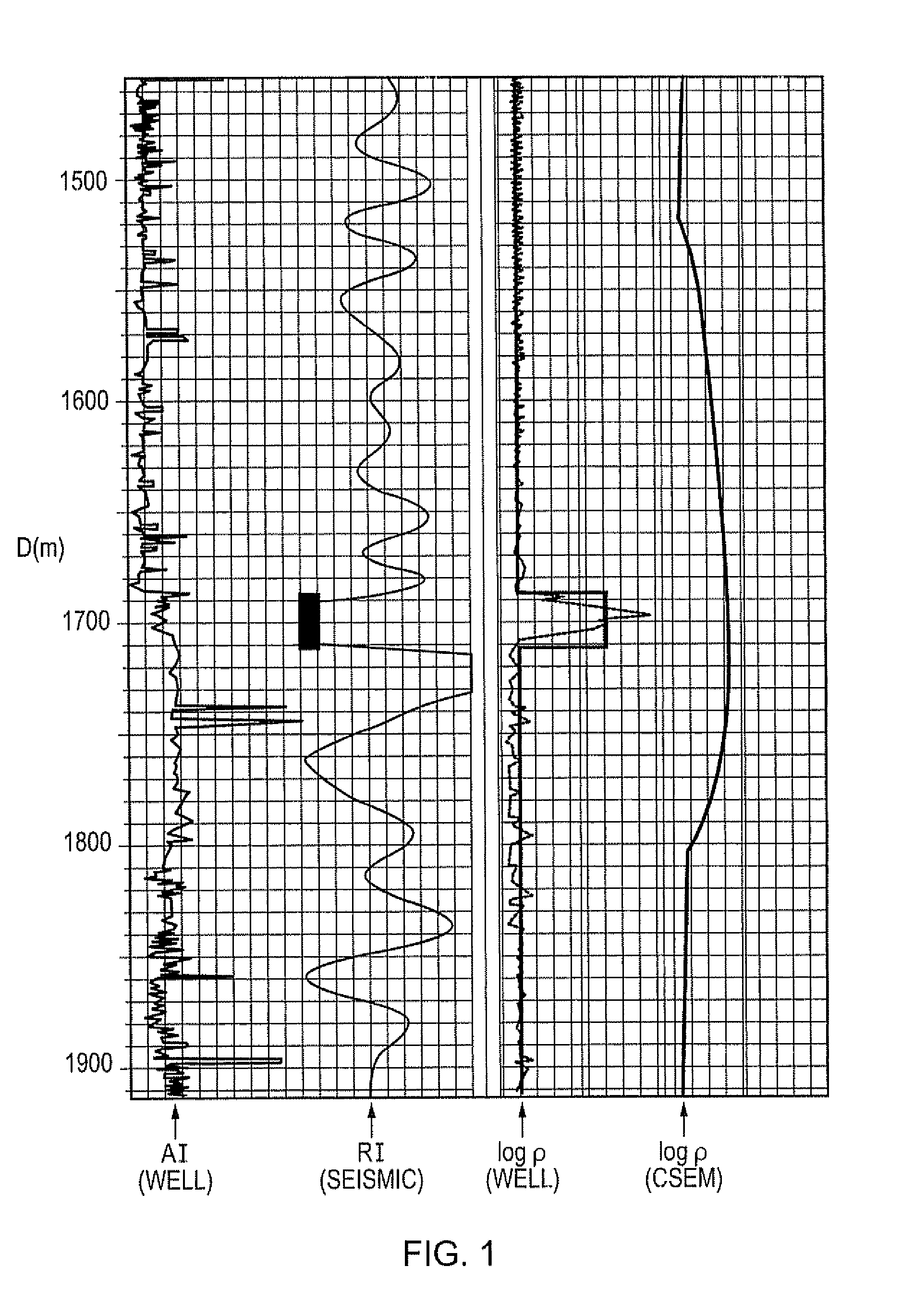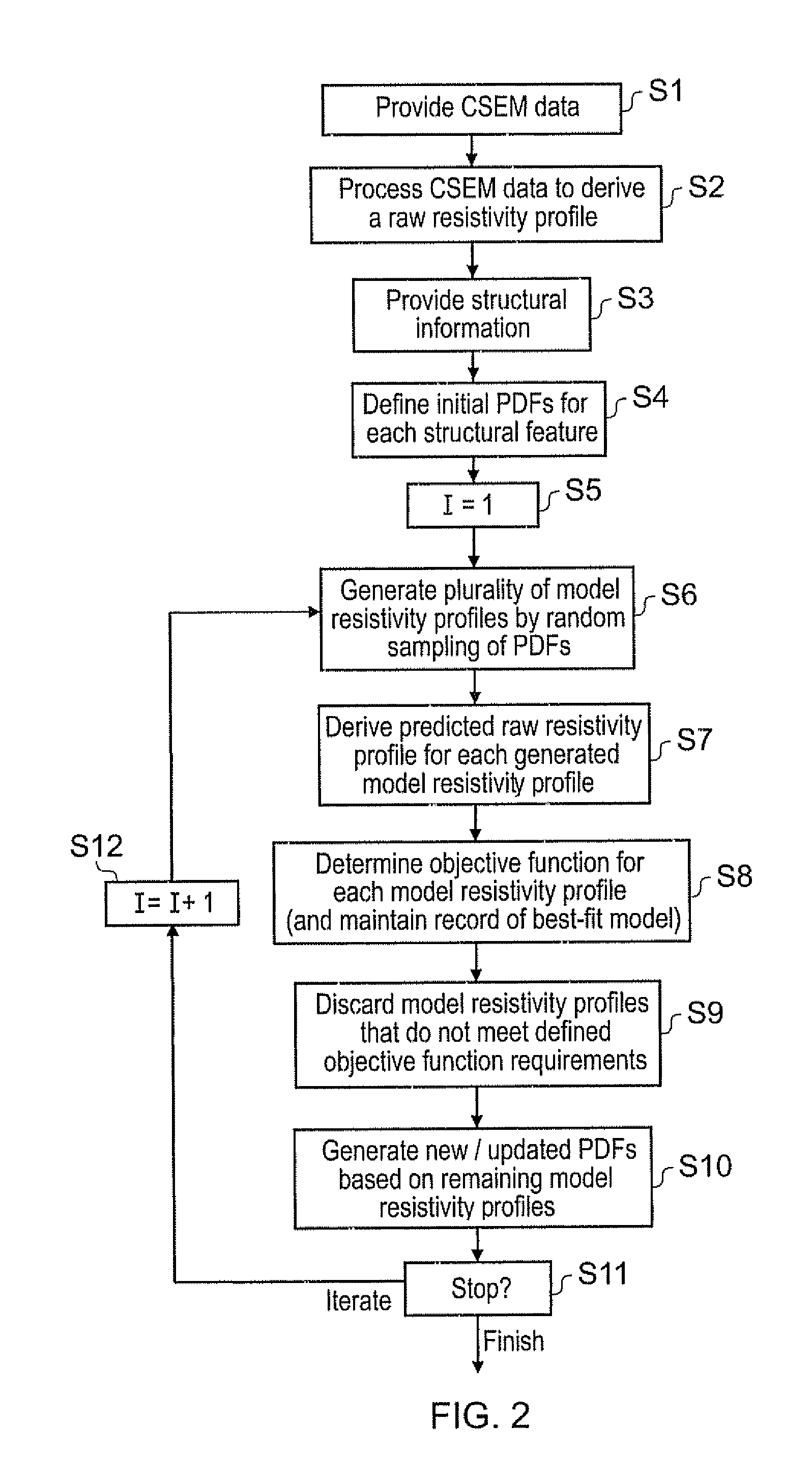Geophysical surveying
a geophysical surveying and geophysical technology, applied in the field of geophysical surveying, can solve the problems of weaker em fields seen at the detector, poor spatial resolution of the results, and inability to distinguish what is in the reservoir (i.e., the pore fluid)
- Summary
- Abstract
- Description
- Claims
- Application Information
AI Technical Summary
Benefits of technology
Problems solved by technology
Method used
Image
Examples
Embodiment Construction
[0043]FIG. 2 is a flow chart schematically showing a method of processing CSEM data obtained from an area of interest according to an embodiment of the invention. The process is an iterative one, and may in some respects be considered as a modification of a simulated-armealing algorithm [8]. For the purposes of this example it will be assumed that the CSEM data are obtained from the region of the Nuggets-1 gas field for which data are shown in FIG. 1.
[0044]In Step S1, CSEM data from a survey of the area of interest are obtained, or otherwise provided. Thus Step S1 may include performing a CSEM survey to obtain the data, or otherwise providing data from elsewhere, e.g., historical data from an earlier CSEM survey of the area. The data may be conventional CSEM data.
[0045]In Step S2, the CSEM data are processed in accordance with any known technique, e.g. an inversion technique, to derive a subterranean resistivity profile. This initial profile may be referred to here as the raw resist...
PUM
 Login to View More
Login to View More Abstract
Description
Claims
Application Information
 Login to View More
Login to View More - R&D
- Intellectual Property
- Life Sciences
- Materials
- Tech Scout
- Unparalleled Data Quality
- Higher Quality Content
- 60% Fewer Hallucinations
Browse by: Latest US Patents, China's latest patents, Technical Efficacy Thesaurus, Application Domain, Technology Topic, Popular Technical Reports.
© 2025 PatSnap. All rights reserved.Legal|Privacy policy|Modern Slavery Act Transparency Statement|Sitemap|About US| Contact US: help@patsnap.com



